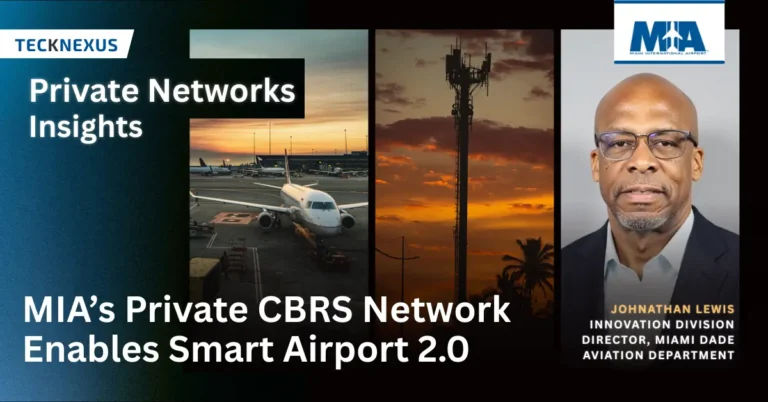- short
- November 26, 2025
- Hema Kadia
Home » Private 5G » Page 2
Private 5G
- short
- November 26, 2025
- Hema Kadia
- short
- November 26, 2025
- Hema Kadia
- short
- November 26, 2025
- Hema Kadia
- short
- November 26, 2025
- Hema Kadia
- short
- November 29, 2025
- Hema Kadia
Miami International Airport (MIA) is transforming operations with its private CBRS network, central to its Smart Airport 2.0 strategy. The network enables secure, real-time automation across IoT devices, passenger services, and operational systems. From enhancing cybersecurity and reducing costs to monetizing connectivity for tenants, MIA demonstrates how airports can use
- short
- November 26, 2025
- Hema Kadia
- short
- November 26, 2025
- Hema Kadia
- short
- November 26, 2025
- Hema Kadia
- short
- November 26, 2025
- Hema Kadia
- short
- November 26, 2025
- Hema Kadia
TeckNexus Newsletters
I acknowledge and agree to receive TeckNexus communications in line with the T&C and privacy policy.
Whitepaper
The whitepaper, "How Is Generative AI Optimizing Operational Efficiency and Assurance," provides an in-depth exploration of how Generative AI is transforming the telecom industry. It highlights how AI-driven solutions enhance customer support, optimize network performance, and drive personalized marketing strategies. Additionally, the whitepaper addresses the challenges of integrating AI into...

Whitepaper
As VoLTE becomes the standard for voice communication, its rapid deployment exposes telecom networks to new security risks, especially in roaming scenarios. SecurityGen’s research uncovers key vulnerabilities like unauthorized access to IMS, SIP protocol threats, and lack of encryption. Learn how to strengthen VoLTE security with proactive measures such as...

Whitepaper
Dive into the comprehensive analysis of GTPu within 5G networks in our whitepaper, offering insights into its operational mechanics, strategic importance, and adaptation to the evolving landscape of cellular technologies....
Explore Magazines
Promote your brand
Check Private Network Readiness
Industry Vertical Specific Deep-Dive Assessment

Manufacturing
$750
250 questions based assessment and insights
$750
Utilities
$500
65+ questions based assessment and insights
$500
Mining
$500
160 questions based assessment and insights
$500
Aviation
Coming Soon
75+ questions based assessment and insights
Coming Soon
Ports
Coming Soon
75+ questions based assessment and insights
Coming Soon* Prices does not include tax












